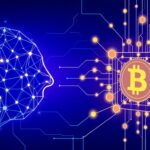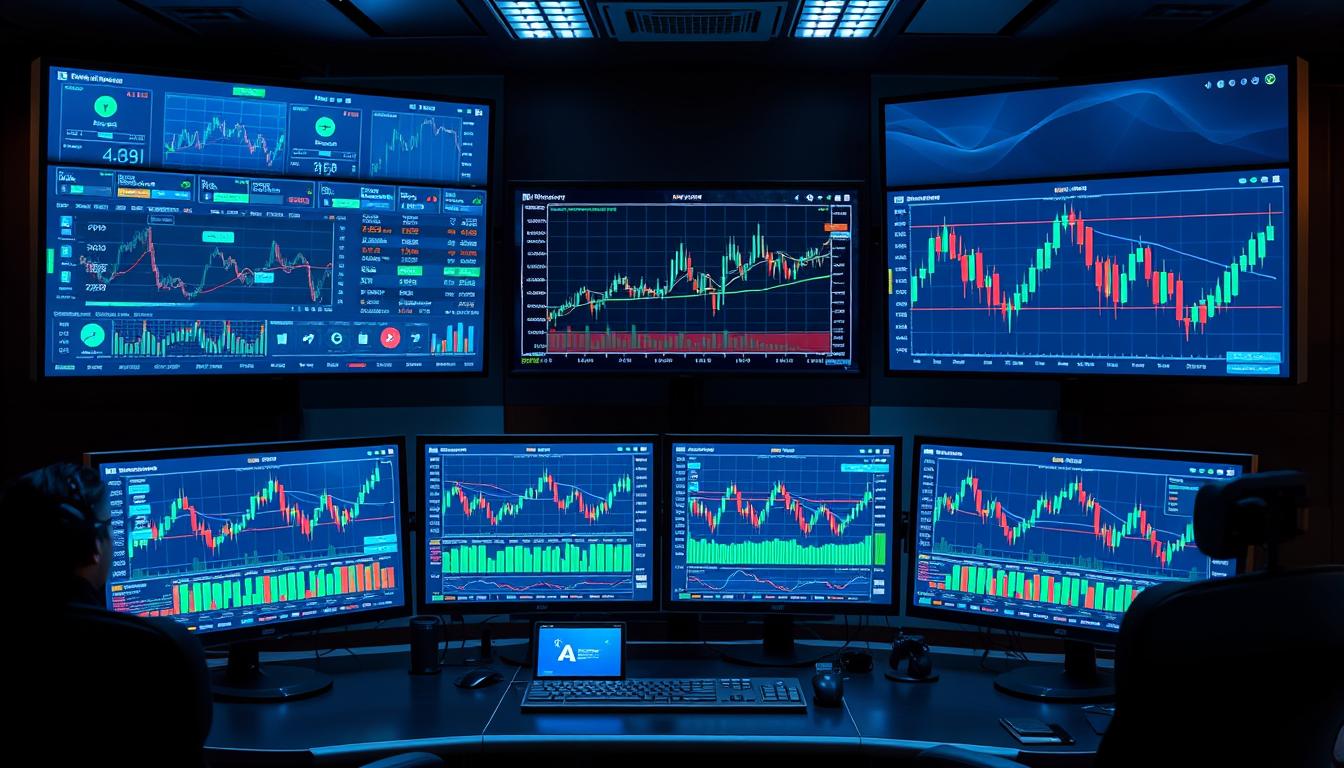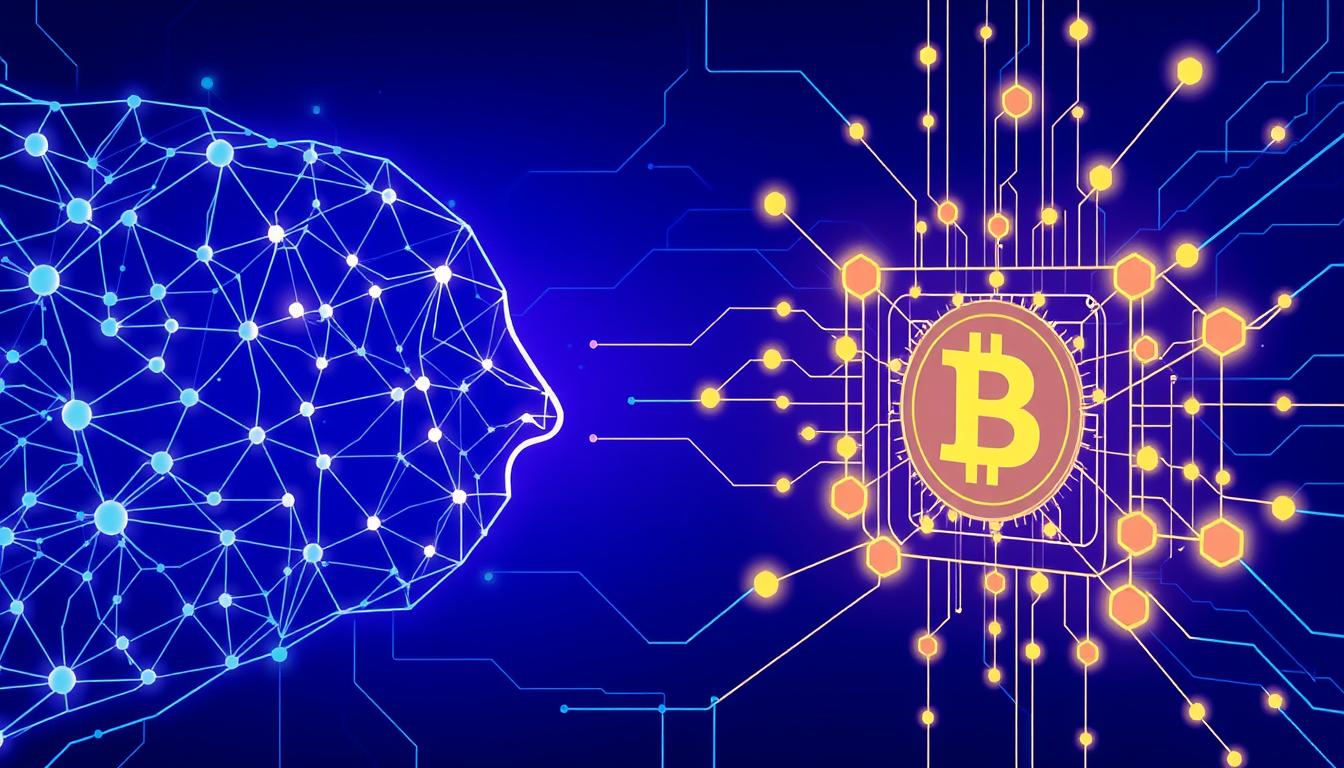The trading world is changing fast. Gone are the days of loud trading floors. Now, we have quiet digital exchanges thanks to technology. The future looks even more exciting with AI, blockchain, and mobile platforms leading the way.
These new tools are not just changing trading. They’re making it easier for everyone to get involved. They’re making markets more efficient and opening up new opportunities.
We’re going to look at the technologies that will change financial markets. We’ll see how they might change the way everyone trades. Whether you’re a pro or just starting, knowing about these changes is key.
AI and Machine Learning: The New Market Intelligence
Artificial intelligence is now a big part of trading. Today’s AI can look at huge amounts of data fast. It finds patterns and connections that humans might miss for days.
Predictive Analytics Transforming Decision-Making
Predictive analytics is a big deal in AI trading. It uses old and new data to guess what will happen next. It’s way better than old ways of looking at the market.
Big banks are using this to get ahead. For example, JP Morgan’s LOXM system finds the best prices fast. It learns from millions of trades to get better.
Sentiment Analysis: Reading the Market’s Mood
Sentiment analysis is another big AI use. It looks at news and social media to see how people feel. It can spot changes before they show up in prices.
This is big for traders. Even small investors can get insights once only for big players. Sites like eToro and Robinhood are making AI tools easier to use.
“AI isn’t replacing human traders—it’s making them better. It lets them handle more info and make smarter moves.”
– Dr. Melissa Chen, AI Research Lead at QuantTech Solutions
Blockchain and DeFi: Reimagining Market Infrastructure
Blockchain is changing trading in big ways. It’s not just about crypto. It’s changing how we deal with assets.
Tokenization: Fractionalizing the Investment World
Tokenization is making big changes. It turns assets into digital tokens on blockchain. This means even small investors can get into big assets.
This isn’t just for special assets. Companies like Polymath and Securitize are making it easy to turn regular securities into tokens. This could make trading faster and cheaper.
Decentralized Exchanges: Trading Without Intermediaries
Decentralized exchanges (DEXs) are another big change. They let people trade directly without middlemen. This is thanks to smart contracts.
Places like Uniswap and dYdX show how trading can work without big exchanges. They’re mostly for crypto now, but could be for other assets too. This could make markets safer and more stable.
Benefits of Blockchain Trading
- 24/7 market access without exchange hours
- Reduced settlement times from days to minutes
- Lower transaction costs by eliminating intermediaries
- Enhanced transparency with immutable transaction records
- Fractional ownership of previously inaccessible assets
Challenges to Overcome
- Regulatory uncertainty across jurisdictions
- Scalability limitations of current blockchain networks
- Integration with legacy financial systems
- Security concerns and smart contract vulnerabilities
- Market liquidity in nascent decentralized exchanges
Algorithmic Trading: From Institutions to Individuals
Algorithmic trading uses computer programs to make trades based on set rules. It’s been a big part of institutional trading for years. Now, these systems handle about 60-70% of U.S. equity trading. But, what’s changing is that these tools are becoming more available to everyone.
High-Frequency Trading Evolution
High-frequency trading (HFT) is at the forefront of algorithmic strategies. It involves firms racing to make trades in just microseconds. These systems need a lot of setup, like being close to exchange servers to cut down on delays.
The future of HFT is in smarter machine learning. This tech can adjust to market changes quickly. With quantum computing getting better, we might see even more advanced trading algorithms soon.
Democratization of Algorithmic Strategies
What’s even more exciting is how easy it’s becoming for regular investors to use algorithmic trading. Sites like QuantConnect, Alpaca, and even big brokerages offer tools for creating and running automated trading plans. You don’t need to know how to code to get started.
Key Components of Modern Algorithmic Trading Systems
- Strategy Development Environment: Tools for coding, testing, and optimizing trading strategies
- Backtesting Engine: Systems for evaluating strategy performance against historical data
- Risk Management Framework: Automated controls to limit possible losses
- Execution Engine: Optimized systems for routing orders to achieve best execution
- Performance Analytics: Tools for measuring and improving trading results
This shift makes trading more accessible to everyone. While retail traders don’t work as fast as big institutions, it’s a step towards fairness. Soon, using algorithms might be common for all investors, not just big ones.
Mobile Trading: Markets in Your Pocket
Smartphones have changed how we deal with money. Mobile trading apps have grown from simple portfolio viewers to full-featured platforms. Now, you can trade complex strategies from anywhere.
The Rise of Commission-Free Trading
Mobile trading came at a time when trading without paying commissions became popular. Robinhood started this trend, and now big brokerages offer it too. This has made it easier for new investors to join the market.
This change has brought in millions of new investors. In 2020, brokerages saw a huge increase in new accounts. Many of these were from young, first-time investors. This change is already affecting how markets work, making some areas more active.
Advanced Features Coming to Mobile Platforms
Mobile trading is getting even better. Soon, apps will have features that are now only on professional desktop systems:
| Feature | Current State | Future Development |
| Technical Analysis | Basic charting with limited indicators | Advanced pattern recognition with AI-assisted interpretation |
| Order Types | Market, limit, stop orders | Complex conditional orders and algorithmic execution |
| Research Tools | Basic company information and news | Personalized research with sentiment analysis and alternative data |
| Portfolio Analysis | Simple performance tracking | Risk factor analysis and scenario testing |
| Social Integration | Basic sharing capabilities | Collaborative investing and strategy sharing platforms |
As phones get better and 5G networks grow, the difference between mobile and desktop trading will fade. The goal is to make trading easy and accessible on any device.
RegTech: Compliance in the Digital Age
Trading technology keeps getting better, and so does the need for following rules. Regulatory Technology—or RegTech—uses automation and analytics to make following rules easier.
Automated Compliance Monitoring
Today’s trading platforms use real-time checks to spot regulatory issues early. They watch for signs of market manipulation and insider trading. They also check for rule breaks in trading limits.
The future of checking for compliance is in predictive systems. These systems look for patterns in trading to find risks before they happen. They can catch unusual activities early, helping to prevent problems.
Streamlined Regulatory Reporting
After the 2008 crisis, reporting rules got much stricter. This has made it hard for trading firms to keep up. But, RegTech solutions are making things easier by automating reports.
As rules change, we’ll see more standard ways to report data. This could lead to real-time checks by regulators. They’ll get updates as they happen, not just reports.
“The best RegTech solutions don’t just save money. They turn compliance into a way to get ahead by giving deep insights into trading and risks.”
– Sarah Johnson, Chief Compliance Officer at Global Trading Solutions
Cloud Computing: Scalable Infrastructure for Modern Trading
Cloud computing has changed how trading technology works. Firms don’t need to spend on expensive setups anymore. They can use what they need, when they need it, and only pay for it.
Elastic Computing Resources
Trading needs change a lot, like during market times or when things get really busy. Clouds let firms adjust their resources to match these changes. This means they can perform well without wasting money on too much.
This flexibility is great for big tasks like testing trading plans or running risk checks. What used to take days can now be done in hours or minutes with cloud power.
Enhanced Collaboration and Accessibility
Cloud trading platforms make it easy for teams to work together, no matter where they are. Everyone can use the same tools and data, making global teams work smoothly.
For small firms and solo traders, cloud platforms are a game-changer. They offer top-notch tools without needing a lot of money. Services like AWS, Google Cloud, and Microsoft Azure make it easy to start and grow.
Advantages of Cloud-Based Trading
- Less money spent on hardware
- Resources adjust to market needs
- Redundancy for keeping business running
- Quick start for new strategies
- Access to special financial cloud services
Considerations and Challenges
- Keeping data safe and following rules
- Concerns about speed for fast trading
- Staying with one service too much
- Managing costs for changing needs
- Connecting with old systems
Big Data and Alternative Data: New Sources of Alpha
There’s a lot more data available now, changing how traders find insights. They look at more than just financial reports and economic numbers. They also use “alternative data” for an edge.
Alternative Data Sources Reshaping Research
Alternative data is a wide range of info, like satellite images of parking lots or credit card data. It can show what’s happening before official numbers come out. This includes things like what people are buying or how companies are doing.
The market for this data has grown a lot. Now, hundreds of providers offer it to investors. At first, it was mostly for big hedge funds and quant traders. But now, even smaller firms and smart retail investors can use it.
Advanced Analytics Capabilities
Understanding diverse data streams needs advanced analytics. Natural language processing can analyze earnings call transcripts. It can detect management sentiment.
Computer vision systems can count cars in parking lots from satellite images. Machine learning models find subtle patterns across datasets. These patterns might show trading opportunities.
The future of trading analytics is about systems that automatically analyze data. They should extract insights without human help. As these systems improve, using alternative data will be key to success.
How are traders using alternative data today?
Hedge funds and quantitative traders use alternative data in many ways. They analyze satellite images of agricultural areas to predict crop yields. They also monitor social media sentiment to predict consumer earnings.
They track shipping data to understand supply chain dynamics. And they use mobile location data to estimate retail store traffic before earnings reports.
Is alternative data accessible to retail investors?
Yes, it is becoming more accessible. While expensive platforms exist, many brokerages offer alternative data insights. Specialized services also provide these insights at lower prices.
Emerging Trends: What’s Next for Trading Technology
Several emerging trends could dramatically change financial markets in the future.
Quantum Computing: The Next Computational Frontier
Quantum computing could change how we solve complex problems. It’s in early stages but could revolutionize portfolio optimization and risk management.
Financial giants like JPMorgan Chase and Goldman Sachs are exploring quantum applications. But practical uses are years away. When quantum computing helps finance, it could start a new race.
Augmented Reality Trading Interfaces
Virtual and augmented reality could change how traders interact with data. They could work in immersive environments with complex data visualizations.
Early tests show promise in visualizing data like options surfaces in 3D. As the tech improves, trading floors might become AR environments for teamwork.
Voice and Neural Interfaces
Voice interfaces are coming to trading platforms. They let traders use natural language to request information or execute orders. Neural interfaces could further reduce latency, but they’re speculative now.
More practical are voice analytics systems. They can analyze emotional states during earnings calls. This could signal market-moving information early.
Conclusion: Navigating the Trading Technology Revolution
The future of trading technology offers great opportunities and challenges. AI and machine learning improve decision-making. Blockchain, mobile platforms, and cloud computing are also changing the game.
For institutional investors, staying competitive means investing in tech and talent. For individual traders, new tools level the playing field. These changes make markets more accessible, efficient, and transparent.
Adaptability and continuous learning are key in this digital financial landscape. As we navigate this revolution, staying ahead is essential.
Want to Implement These Technologies in Your Trading?
Download our guide “Implementing Advanced Trading Technologies: A Practical Approach”. It shows how to use AI, algorithms, and blockchain in your strategy.
Stay Ahead of Trading Technology Trends
Subscribe to our newsletter for weekly insights on trading technology. Learn how these trends might impact your strategy.














